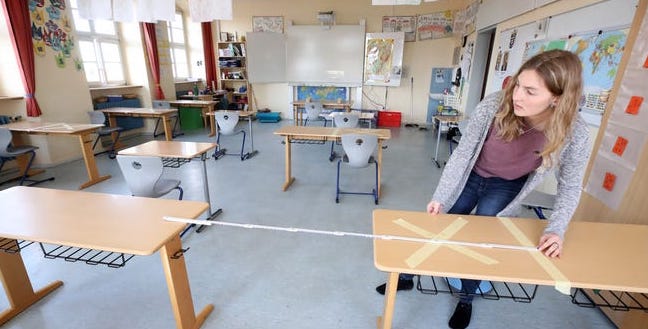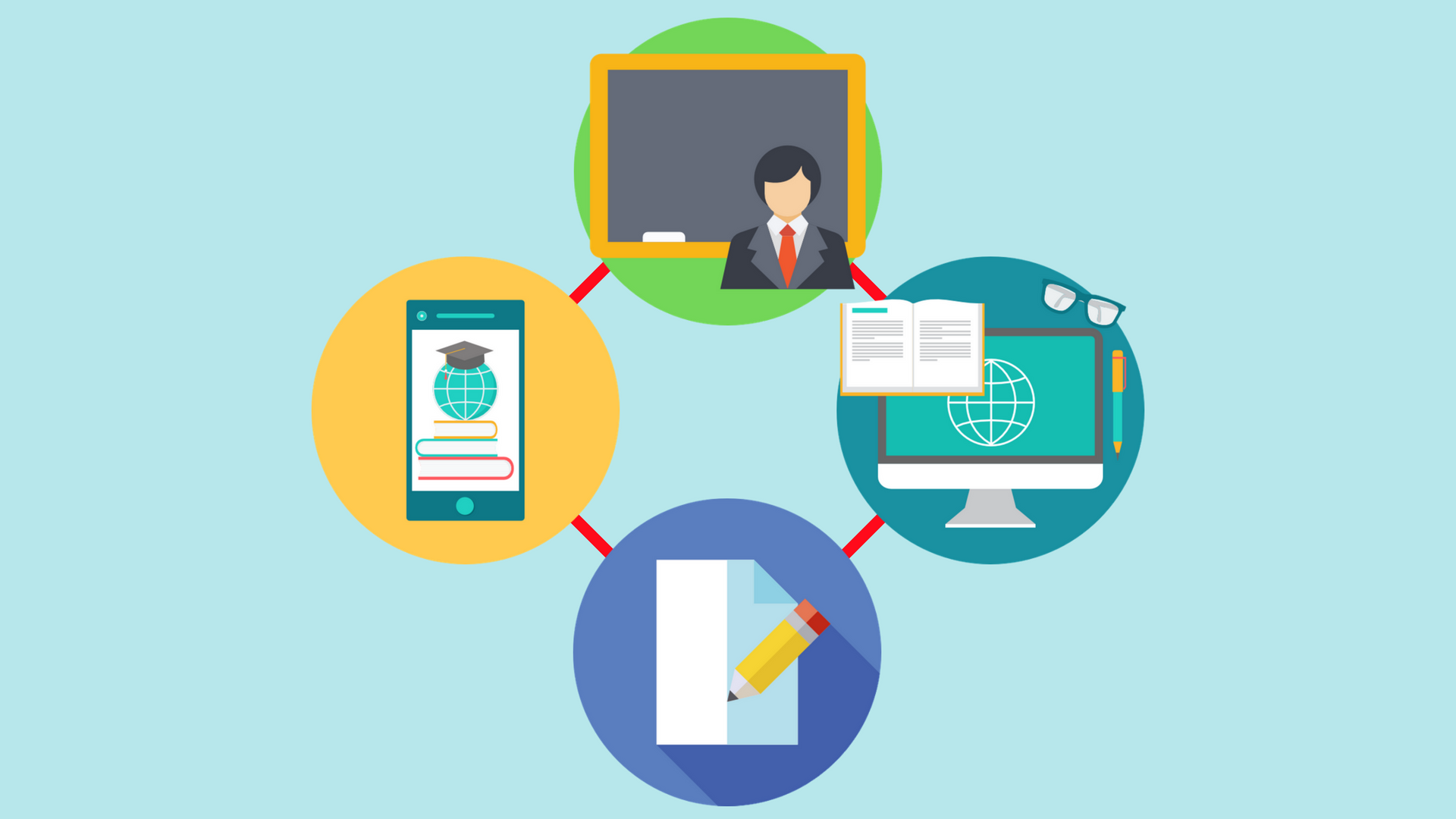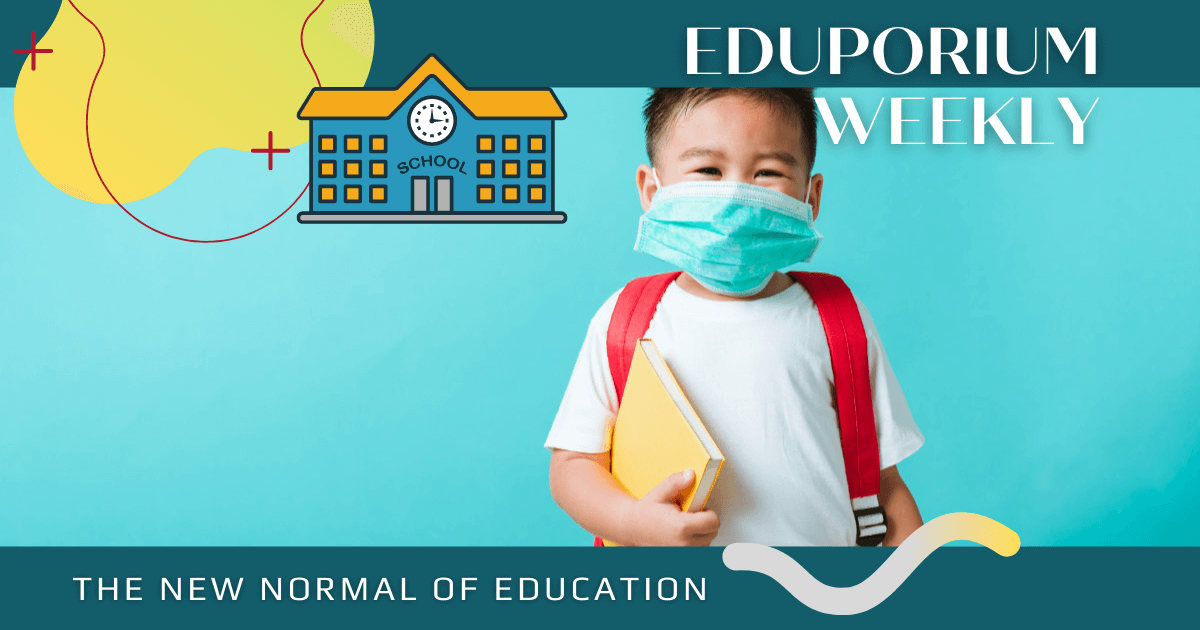State officials and education leaders are starting to announce their plans for reopening schools in the fall. While we know that students and teachers returning to the physical classroom together is the ideal option, there are plenty of opponents to this course of action who still think it will be too unsafe. There are so many things for school leaders to consider, including whether students will be required to wear masks, how a teacher can develop connections with students while wearing a mask, where students will eat lunch, how class sizes will be affected, and how to space them out far enough on school busses. With all the uncertainty surrounding if, when, and how the doors of schools will open up, it’s become pretty clear that teachers, parents, and students are not sure about what to expect come fall.
The Argument for Schools to Open
Let’s start with the argument for allowing school doors to open in the fall. Former governor of Florida, Jeb Bush, has been vocal about stating his view that this should be the case once the school year starts and an interview with him was recently published on the Education Next website. He is not the only one advocating for a return to the classroom, but his record in working towards solidifying school reform and school choice policies has helped position him as an influential mind on the matter. Like everyone else, the paramount concern Bush has is for the safety of children and school faculty. At the same time, he strongly warns of the economic, health, and social challenges that would persist should schools remain closed—something he doesn’t seem to see being worth navigating.
Bush went on to say that he would like to see school leaders get creative when it comes to figuring out how to get students back in the classroom and that, in his opinion, staying quarantined is not an option. Bush’s reason for pushing towards a reopening also includes potential fallback plans—much like the ones being developed over the summer by leaders of just about every school district. Though he acknowledges a need to return to in-person instruction, Bush has advocated for plans that detail classroom learning, blended learning, and virtual learning. And, at this point in time, it seems that every school leader is going to be involved in crafting such a plan—with plenty of differentiation arising from state to state.
Continuing, Bush referred to the digital divide that has become more widely exposed since schools shut down and the opportunities so many students have missed out on. With their schools being closed, learning and being connected to others completely and abruptly stopped for a lot of students. That is one of the main reasons Bush is pushing for schools to reopen citing statistics, including the fact that only one third of homes in rural areas of the country had broadband access and low-income families routinely have been unable to provide students with devices. Bush also believes that providing all students with a reliable device would be ideal and planning to mix in some distance learning days would be beneficial. Ultimately, Bush doesn’t see isolated learning through the use of technology tools as beneficial for students in the long-term and there are plenty who agree that the in-person connections created in a classroom cannot be replicated. Here is the full interview.
Questions Being Asked About Reopening Schools
There are bound to be hundreds of questions posed to school leaders and even political leaders as the time to head back to the classroom draws nearer. So, while we can’t really provide a concrete answer to many of the most common questions parents and teachers are asking about reopening schools, we can at least try to shed some light on what people are most concerned about. At the top of the list is the question about hybrid versus in-person learning and whether or not it’s really possible to have every student in the school building every day. The most logical response we can think of is that it depends a great deal on the location of that school. If the school is in an area where cases are low or continuously declining, then it’s much more possible. If not, then we don’t see every student every day being a realistic and safe possibility. Even if school leaders try to cram as many students into a school each day while keeping distancing measures in place, how do they decide who comes and on which days?
Then, there’s the question about whether or not parents will send their kids back to school. We all know that distance learning and homeschooling were tough on parents, but we can’t imagine too many of them are willing to put their children at risk if health conditions don’t improve. Then, if that becomes the case, will teachers be forced to prepare both in-person lessons and distance learning assignments for the children who are not present at school? That sounds horrible. School leaders will also have to consider that some school faculty will prefer to work remotely—everyone from classroom teachers to administrators to support staff. Whenever possible, this could be something worth allowing, but, again, could come down to a decision about who is allowed to do so.
Then, there’s the issue of face coverings. It seems likely that, if schools do reopen, students and teachers will have to wear masks. All day. Though there might be some exceptions for the youngest of students, this hardly seems like the kind of environment real learning can occur within. If masks are not worn, however, can we really rely on ‘six feet’ of separation to keep everybody safe? Then, once district or school leaders establish the rules they’re going to run with, how can anybody make sure they’re enforced? Getting a bunch of second graders to only walk one direction in a hallway doesn’t seem too promising and making sure a class full of first graders never goes near each other is not likely to happen. So, how would school leaders make sure guidelines are enforced and, ultimately, that they remain in place without anybody in the building letting their guard down and getting complacent?

Additional Challenges in Ensuring a Return to School
We know by now that it will be challenging for students to return to school safely in the fall in many parts of the country. In many of those same places, it will be a logistical challenge for them to return to school, period. Simply thinking about social distancing requirements, is it even possible to fit all the students in a class into one classroom? Maybe not in some cases. This could require classes be reshuffled and additional teachers being assigned to teach some students—perhaps in an area they’re not too familiar with. Then, there’s the issue of school buses. Many parents rely on them to get students to and from school, but might not be comfortable with kids being packed into them. Enforcing physical distance between students on the bus could prove difficult as could finding enough bus drivers to ensure every student has a way to get to and from school. So, on top of everything else, those are some other predicaments.
With all of the changes to education should students return and remain in school this fall will come a lot of additional costs, posing the question of whether or not they can all be covered. The budgets for use in school systems are, in many cases, maxed out as it is, which will probably make it that much tougher just for some schools to make conditions safe enough to open. Then, there’s the question about what might happen if district leaders are forced to close schools again. We know that many state leaders are requiring school leaders to draft contingency plans should this come into play, but school leaders also need to recognize if they should shut things down, what the criteria for deciding this would be, and how long a shutdown might last. They also, unfortunately, need to develop a plan (and possibly work with a health expert—another cost) in the case that a student or staff member develops symptoms.
Finally, the question of student safety comes into play. Young kids may not always be fully aware of the severity of the public health situation, but they do have some idea. Requiring them to wear a mask all day would only add to that fear and, at some point, participating in this reimagined version of the school day could have social-emotional ramifications on them. School leaders would likely need to implement some sort of contact tracing system and keep track of which students are in the building on which days. Privacy concerns could also come into play if students and staff members have to disclose where they’ve been, who they’ve been with, and for how long. In addition to physical safety measures, mental health evaluations for both students and teachers will probably need to be planned for since the school day will be drastically different and the experiences they’ve all had already could make them more agitated.
What Hybrid Learning Might Look Like
Leaders of many school districts have already committed to a hybrid learning model when doors to their schools reopen in the fall. What exactly this means, however, is different in almost every situation and, more importantly, the effectiveness it will bring with it is entirely up in the air. As many of us have said, the No. 1 priority is everybody’s safety and continuing education with a mix of in-person and remote instruction creates at least a little bit more assurance that everyone will remain healthy after returning to communal spaces. Hybrid learning has been used in some Chinese schools as they essentially served as a bit of a model for what returning to the classroom might look like. It could involve taking a child’s temperature at home, repeating this once they arrive at the school, entering the building with plenty of space in between each other, and, of course, sitting up to six feet apart all day long.
But, the more important question is how hybrid learning might work academically as opposed to the safety side of things. If school leaders decide on a hybrid approach, teachers can start working on their lesson plans now since they know students will split their time relatively evenly between home and school. Teachers can seek out PD resources, prepare student support materials, and consider the tech tools they’d need for adoption. Some of those who choose hybrid learning might decide on a 50-50 split between in-class and home learning or it could be two-thirds home learning and one-third classroom learning (or another split). Hybrid learning would likely feature a great amount of student choice so that students can try different participation modes to gauge what works well for them—even changing up their preferences from day to day or week to week.
Hybrid learning will also probably feature a lot of equivalency meaning that teachers are going to have to provide lessons and learning activities in different participation modes. They may need to consider where students are learning from on given days, keeping in mind that some students might be learning from home permanently and create assignments that lead to the same learning outcomes for all students. Reusability of learning materials and lessons could also prove to be really important since this would allow for greater flexibility and allow teachers to implement these resources in a remote or in-person setting. Finally, hybrid learning should be designed to be as accessible as possible. Whenever possible, students should be given equitable access to technology and the Internet so they can transition from in-class to remote learning smoothly. So, yeah, there’s quite a bit to consider.

Getting Hybrid Learning Right
As the summer starts to unfold and, especially as we’re seeing surges of coronavirus cases in some parts of the country, hybrid learning is starting to look like a best case scenario. A silver lining at least—if you want to call it that—is that school leaders can spend the entirety of the summer preparing for rolling out a hybrid learning plan when the new school year begins. As much as they all want kids to return to the classroom, parents, teachers, and school officials are getting more apprehensive about a potential outbreak. So, that’s put a greater focus on getting hybrid learning right whether students are attending school for half days or staggering the days on which they appear in the classroom. It will come down to how teachers and school leaders spend their time rather than the questions (and there are plenty) surrounding training, tech, access, devices, and curricula.
As we saw throughout the spring, teachers will work nonstop to ensure that every student is given everything they need. We also saw how this can lead to teachers simply becoming physically and mentally worn out. If forced into hybrid learning this fall, teachers should try to learn from their experiences during the spring and focus on high-value tasks. What this means is that, since teachers will have only limited in-person time with their students, they will need to focus on the higher priority tasks during this time and save things that can be completed remotely for when they’re apart. This includes building rapport and relationships, including in determining where students are getting tripped up on certain content areas.
One suggestion we recently read a lot about surrounded approaches like this. If reading a book, for example, this can be done remotely. Tests and quizzes can even be administered remotely and student papers can, of course, be written remotely. It’s the conversations—the one-on-one discussions—that can really help students improve on their work. And, these are what in-person time could be used for. This will also be different for all subject areas. Math, for example, might require in-person instruction and examples in order for students to truly understand what’s being taught while assignments and tests can be administered remotely. It’s all pretty flexible and developing a plan is the most important factor when it comes to getting hybrid learning as “right” as possible.
For the latest EdTech, STEM, and 21st century education news, follow us on Twitter and Instagram. Like us on Facebook, too, or sign up for our newsletter for our latest product announcements and offerings. If you have an idea for an Eduporium Weekly theme, send us a message on social media or comment below.



